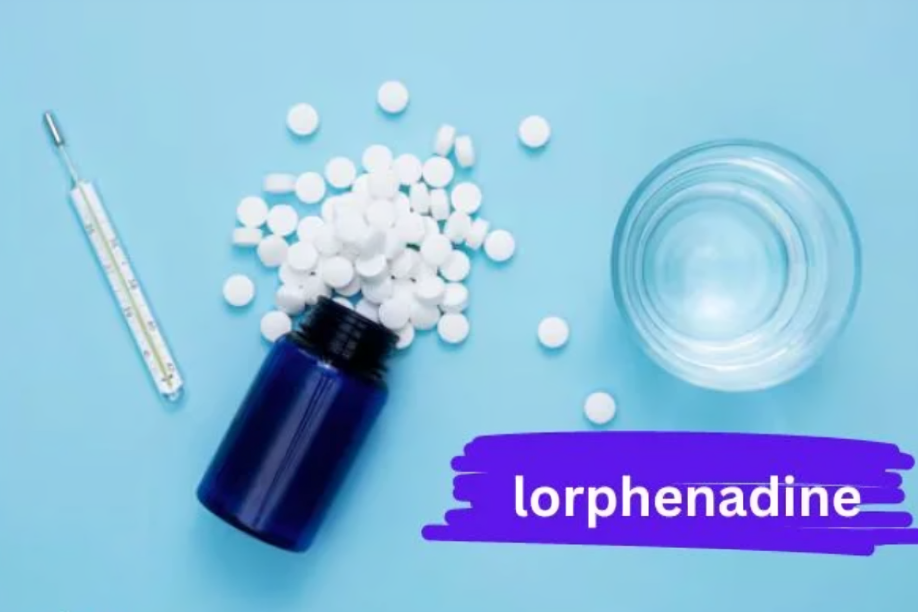
lorphenadine
Introduction
Lorphenadine is a well-regarded medication in the realm of antihistamines, primarily employed to alleviate various allergy symptoms. As our understanding of allergies and their treatment continues to evolve, lorphenadine has emerged as a go-to option for many individuals seeking relief from irritating symptoms like runny noses, sneezing, and itchy eyes. This article will delve into the essential aspects of lorphenadine, including its applications, mechanisms, side effects, dosing guidelines, interactions, and important precautions.
What is Lorphenadine?
Definition and Purpose:Lorphenadine is classified as an antihistamine, specifically targeting symptoms associated with allergies and the common cold. It effectively mitigates symptoms such as watery eyes, nasal congestion, and sneezing by blocking histamine— a natural substance in the body that triggers allergic reactions.
Historical Background:Developed in the early 2000s, lorphenadine was part of a broader initiative to create antihistamines that offered effective symptom relief with fewer side effects than traditional options. Its introduction has significantly impacted the treatment landscape for allergic conditions.
Mechanism of Action
How Lorphenadine Functions:Lorphenadine operates as a selective antagonist of histamine H1 receptors. By obstructing histamine’s binding to these receptors, it effectively halts the allergic response. This blockage reduces capillary permeability, subsequently alleviating symptoms like itching, swelling, and redness.
Indications for Use
Managing Allergic Rhinitis:Allergic rhinitis, or hay fever, is a prevalent condition marked by inflammation of the nasal passages due to allergens such as pollen or dust mites. Lorphenadine has proven effective in diminishing symptoms such as sneezing, nasal discharge, and congestion associated with this condition.
Addressing Chronic Urticaria:Chronic urticaria, characterized by persistent hives, can be distressing. Lorphenadine alleviates the severity and frequency of hives by counteracting histamine’s effects, thus providing relief for those affected.
Additional Uses:Beyond its primary indications, lorphenadine may also be prescribed for conditions such as allergic conjunctivitis, insect bites, and specific skin disorders, as determined by a healthcare provider.
Dosage Guidelines
Standard Dosage Recommendations:For adults and children aged 12 and older, the standard dosage of lorphenadine is typically 10 mg once daily. For younger children, specifically those aged 6 to 11 years, a reduced dosage of 5 mg once daily is generally recommended. Individual responses and specific conditions may necessitate adjustments.
Adjustments for Special Populations:Patients with renal or hepatic impairment may require dosage adjustments. It is essential for these individuals to follow healthcare providers’ recommendations closely to mitigate the risk of adverse effects.
Administration Instructions:Lorphenadine can be taken with or without food. To maintain consistent levels in the bloodstream, it is advisable to take the medication at the same time each day. Tablets should be swallowed whole and not crushed or chewed.
Potential Side Effects
Commonly Reported Side Effects:Users of lorphenadine may experience mild side effects, which often decrease as the body adapts to the medication. These include:
- Drowsiness
- Dry mouth
- Headaches
- Fatigue
- Nausea
Serious Side Effects:While uncommon, serious side effects can arise. These include:
- Severe allergic reactions (e.g., rash, difficulty breathing)
- Changes in mood or mental state
- Irregular heartbeats
Should any of these serious reactions occur, immediate medical attention is crucial.
Managing Side Effects:To alleviate mild side effects, patients might consider:
- Staying hydrated to combat dry mouth.
- Avoiding alcohol and other sedatives to reduce drowsiness.
- Using a humidifier to relieve nasal congestion.
Drug Interactions
Potential Drug Interactions:Lorphenadine may interact with various medications, affecting efficacy or increasing the risk of serious side effects. Notable interactions include:
- MAO inhibitors (e.g., phenelzine)
- Tricyclic antidepressants (e.g., amitriptyline)
- Other antihistamines or anticholinergic drugs
To prevent adverse interactions, it is vital to disclose all current medications to your healthcare provider.
Drug-Food Interactions:Although lorphenadine can be taken with or without food, it is advisable to steer clear of alcohol, as it can amplify drowsiness and enhance sedative effects.
Conditions That May Influence Use:Certain medical conditions may alter the way lorphenadine functions or increase the risk of side effects. These include:
- Kidney disease
- Liver disease
- Glaucoma
- Asthma
Patients with these conditions should consult their healthcare provider before initiating lorphenadine therapy.
Precautions and Warnings
Pre-Treatment Considerations:Before commencing treatment with lorphenadine, patients should discuss their medical history with their healthcare provider, particularly any previous allergic reactions to medications or pre-existing health conditions.
During Treatment Guidelines:While on lorphenadine, patients should adhere to the following precautions:
- Refrain from driving or operating heavy machinery if drowsiness occurs.
- Avoid alcohol or other sedatives.
- Report any new symptoms or side effects to a healthcare provider promptly.
Overdose Information
Signs of Overdose:Overdosing on lorphenadine may manifest through symptoms such as:
- Severe drowsiness
- Restlessness or irritability
- Dry mouth
- In extreme cases, seizures or respiratory depression
Emergency Measures::is essential. Activated charcoal may be administered to prevent further drug absorption, along with supportive measures to monitor and stabilize vital signs.
Conclusion
Lorphenadine serves as an effective antihistamine for managing various allergic conditions. Familiarity with its applications, side effects, interactions, and necessary precautions can aid patients in using this medication safely and effectively. Always seek personalized medical advice from healthcare professionals before initiating any new treatment.
FAQs
Q1: What is lorphenadine used for?
A: Lorphenadine is primarily used to treat symptoms of allergies, such as runny nose, sneezing, and itchy eyes. It can also be effective for conditions like allergic rhinitis and chronic urticaria (hives).
Q2: How does lorphenadine work?
A: Lorphenadine works as a selective antagonist of histamine H1 receptors. By blocking histamine from binding to these receptors, it prevents the allergic symptoms typically triggered by histamine.
Q3: What is the recommended dosage for lorphenadine?
A: The standard dosage for adults and children over 12 is usually 10 mg once daily, while children aged 6 to 11 typically take 5 mg once daily. Dosages may vary based on individual needs and conditions.
Q4: Are there any common side effects of lorphenadine?
A: Common side effects include drowsiness, dry mouth, headache, fatigue, and nausea. These are generally mild and may diminish as the body adjusts to the medication.
Q5: Can lorphenadine be taken with other medications?
A: Lorphenadine can interact with other medications, such as MAO inhibitors and tricyclic antidepressants, which may affect its efficacy or increase side effects. Always consult your healthcare provider about potential drug interactions.
Q6: Is lorphenadine safe for children?
A: Yes, lorphenadine can be used in children aged 6 years and older, with appropriate dosage adjustments based on age and weight.
Q7: Can I take lorphenadine if I’m pregnant?
A: The safety of lorphenadine during pregnancy has not been fully established. Pregnant women should consult their healthcare provider before taking this medication.
Q8: How long does it take for lorphenadine to start working?
A: Lorphenadine typically begins to take effect within 1 to 3 hours after ingestion, with peak effects occurring between 8 to 12 hours.
Q9: What should I do if I miss a dose of lorphenadine?
A: If you miss a dose, take it as soon as you remember. However, if it’s almost time for your next dose, skip the missed dose and resume your regular schedule. Do not double the dose.
Q10: What are the signs of a lorphenadine overdose?
A: Symptoms of an overdose may include severe drowsiness, restlessness, dry mouth, and, in extreme cases, seizures or respiratory depression. Seek immediate medical attention if an overdose is suspected.
Explore exclusive interviews and insights into celebrity lifestyles on chicagoreader.






